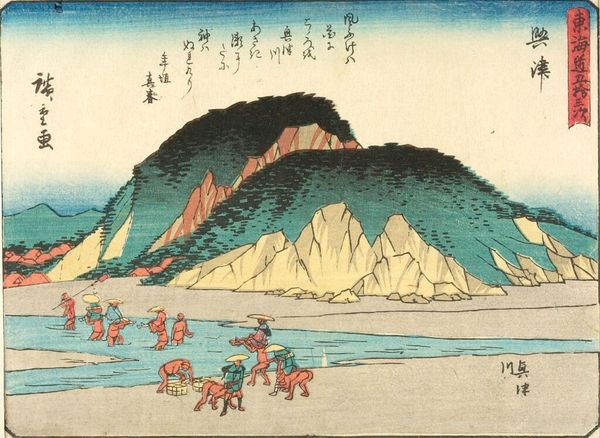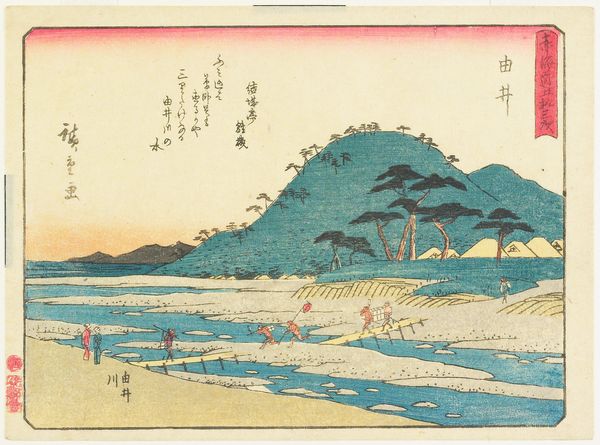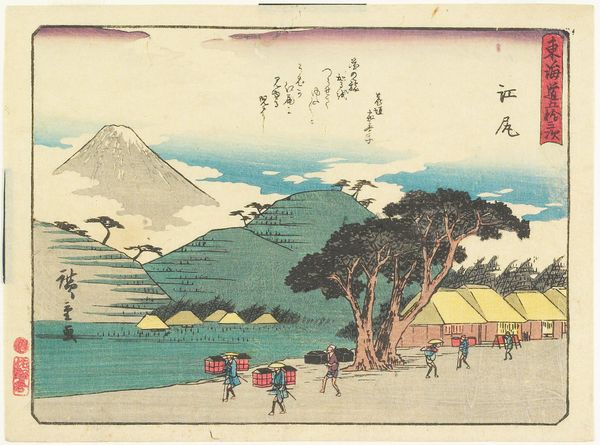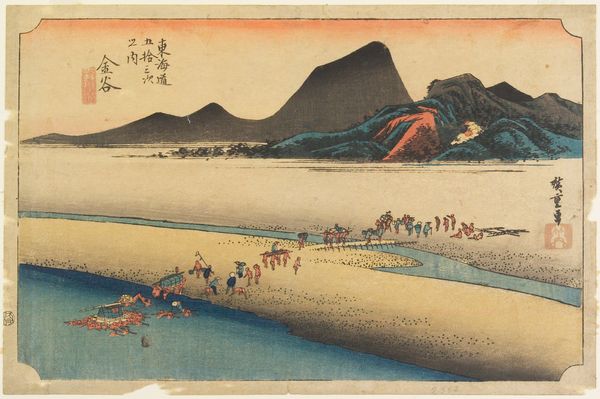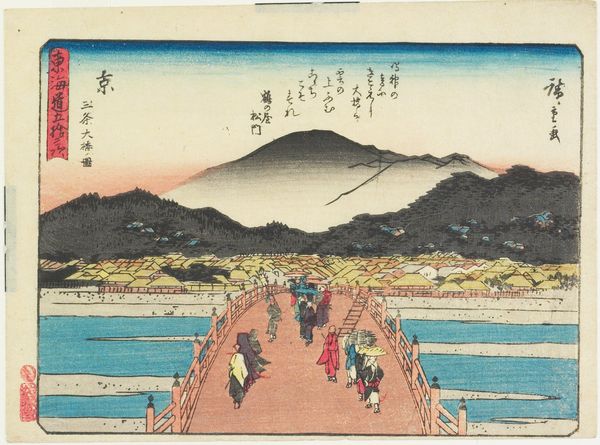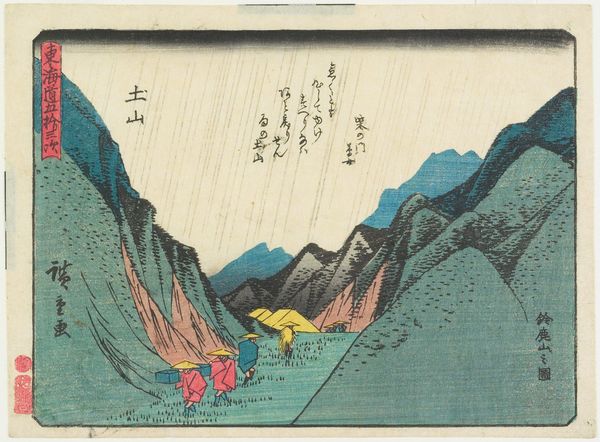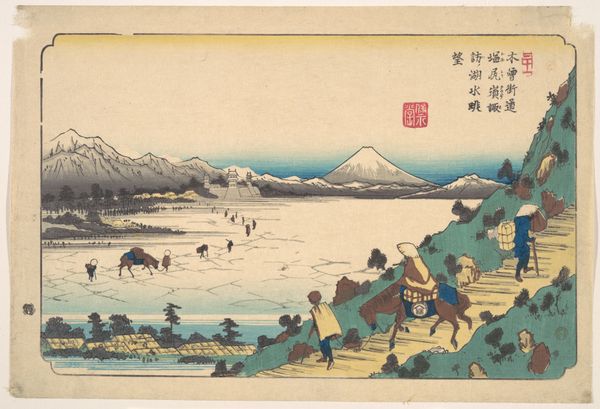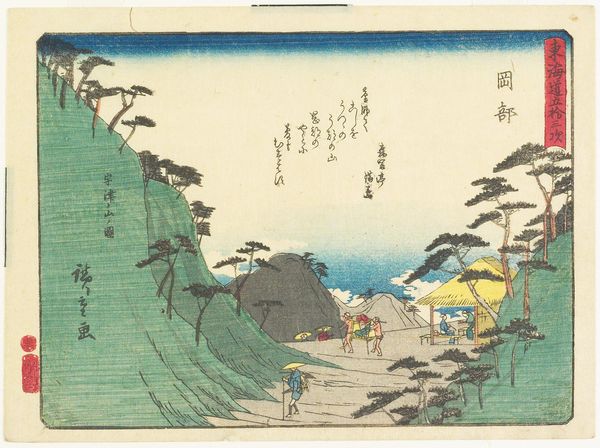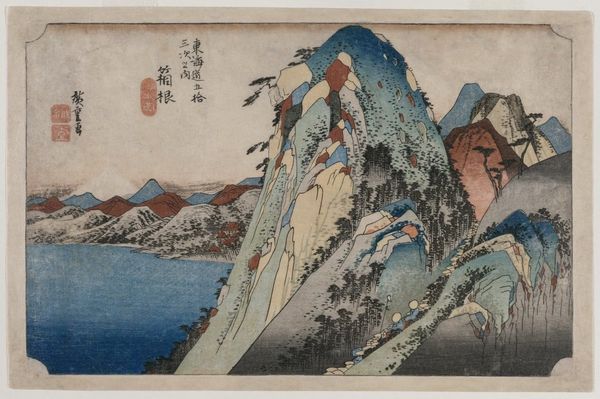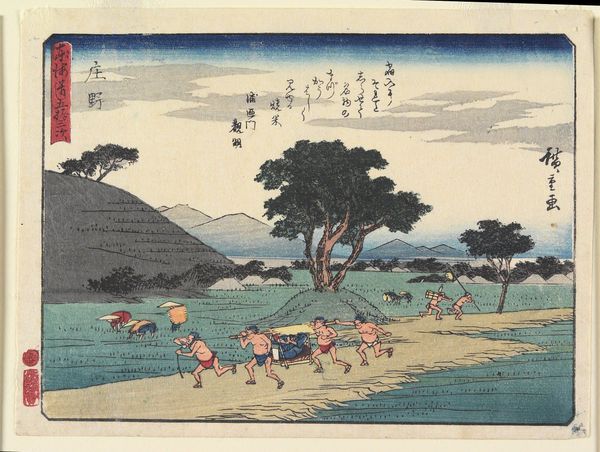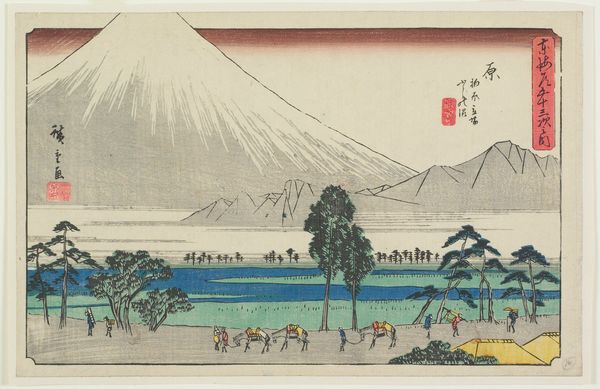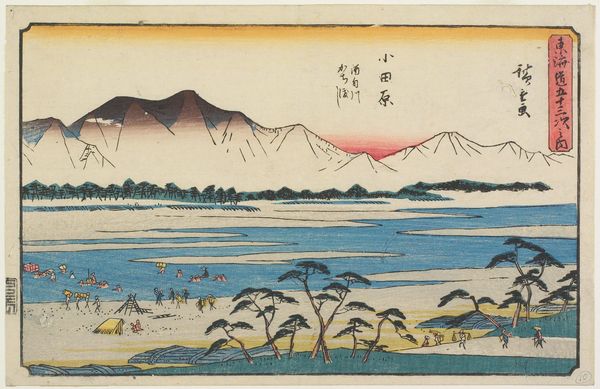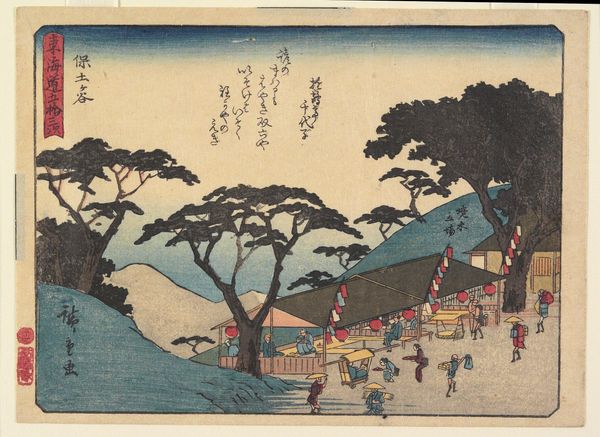
print, ink, woodblock-print
# print
#
asian-art
#
landscape
#
ukiyo-e
#
japan
#
ink
#
woodblock-print
Dimensions: 6 x 8 1/4 in. (15.2 x 21 cm) (image)6 5/8 x 8 15/16 in. (16.8 x 22.7 cm) (sheet)14 x 17 15/16 in. (35.5 x 45.5 cm) (mat)
Copyright: Public Domain
Curator: Welcome. Before us is Utagawa Hiroshige's "Okitsu- The Okitsu River," a woodblock print dating back to 1840-1842. Editor: It’s immediately striking—that contrast! The muted blues of the sky and river against the vibrant oranges and yellows of the earth, capped with dark green foliage. The scale seems deliberately compressed. Curator: Indeed. Hiroshige masterfully utilizes the Ukiyo-e technique, presenting a layered perspective, creating a journey through the composition, and emphasizing certain narrative aspects, in contrast to realism, which makes this an engaging artistic composition rather than merely descriptive of geographic location. Editor: Which is interesting because it’s ostensibly a landscape. But, it focuses so much on the movement, you know? Look at how many figures there are, crossing the river, leading animals, transporting goods. This speaks volumes about the daily lives and commerce intertwined with the natural landscape. The tools and materials needed to produce woodblock prints were also available, not in isolation of the creative mind, but through commerce that sustained many individuals. Curator: Precisely. Notice the compositional structure—the way the lines of the figures are in relationship to the topography, echoing a geometric abstraction where cultural symbiosis, through shape, form and space, produces visual harmony. The formal dynamics work as intended. Editor: Absolutely, and considering this is a print, made via the labor-intensive process of carving and inking blocks, it brings a different dimension to art production. These weren’t unique, one-off paintings but multiples, meant for wider circulation, making art accessible, not only to a handful of patrons. It creates access points to material study about the society’s structures in Japan, from landscape to market to home. Curator: We see Hiroshige expertly manipulating line, form, color, space and plane—intrinsic properties that resonate harmony between subject and medium. Editor: And through those intrinsic qualities, a lens into a specific time and the realities of daily life is opened. Curator: Thank you for bringing the important labor into this examination. Editor: Likewise!
Comments
No comments
Be the first to comment and join the conversation on the ultimate creative platform.
